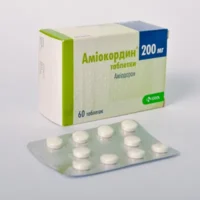Description
Atorvastatin (Atorvastatin) Ananta Coated Tablets 10 mg. №30
Ingredients:
Each tablet contains 10 mg of Atorvastatin.
Dosage:
The usual dose is 10 mg to 80 mg once daily. Dosage should be individualized according to the patient’s response.
Indications:
Atorvastatin is indicated for the treatment of hypercholesterolemia. It is used to reduce elevated total cholesterol, LDL cholesterol, apolipoprotein B, and triglycerides levels.
Contraindications:
Do not use Atorvastatin if you are pregnant or breastfeeding. It is contraindicated in patients with active liver disease.
Directions:
Take Atorvastatin exactly as prescribed by your healthcare provider. It can be taken with or without food.
Scientific Evidence:
Atorvastatin is a widely studied medication with strong scientific evidence supporting its efficacy in reducing cholesterol levels. Clinical trials have demonstrated its ability to significantly lower LDL cholesterol and reduce the risk of cardiovascular events. According to a study published in the New England Journal of Medicine, Atorvastatin showed a 36% reduction in major cardiovascular events compared to a placebo.
Additional Information:
It is important to regularly monitor liver function tests while taking Atorvastatin to detect any potential liver abnormalities. Additionally, patients should be advised to report any unexplained muscle pain, weakness, or tenderness, as these could be signs of a rare but serious side effect called rhabdomyolysis.
Atorvastatin works by inhibiting HMG-CoA reductase, an enzyme involved in the synthesis of cholesterol in the liver. By lowering cholesterol levels, Atorvastatin helps prevent the formation of plaques in the arteries, reducing the risk of heart disease and stroke.
Compared to other statins, Atorvastatin has been shown to be highly effective in lowering LDL cholesterol levels and improving lipid profiles. A meta-analysis published in the Journal of the American College of Cardiology found that Atorvastatin was more effective in reducing LDL cholesterol compared to other statins like simvastatin and rosuvastatin.





